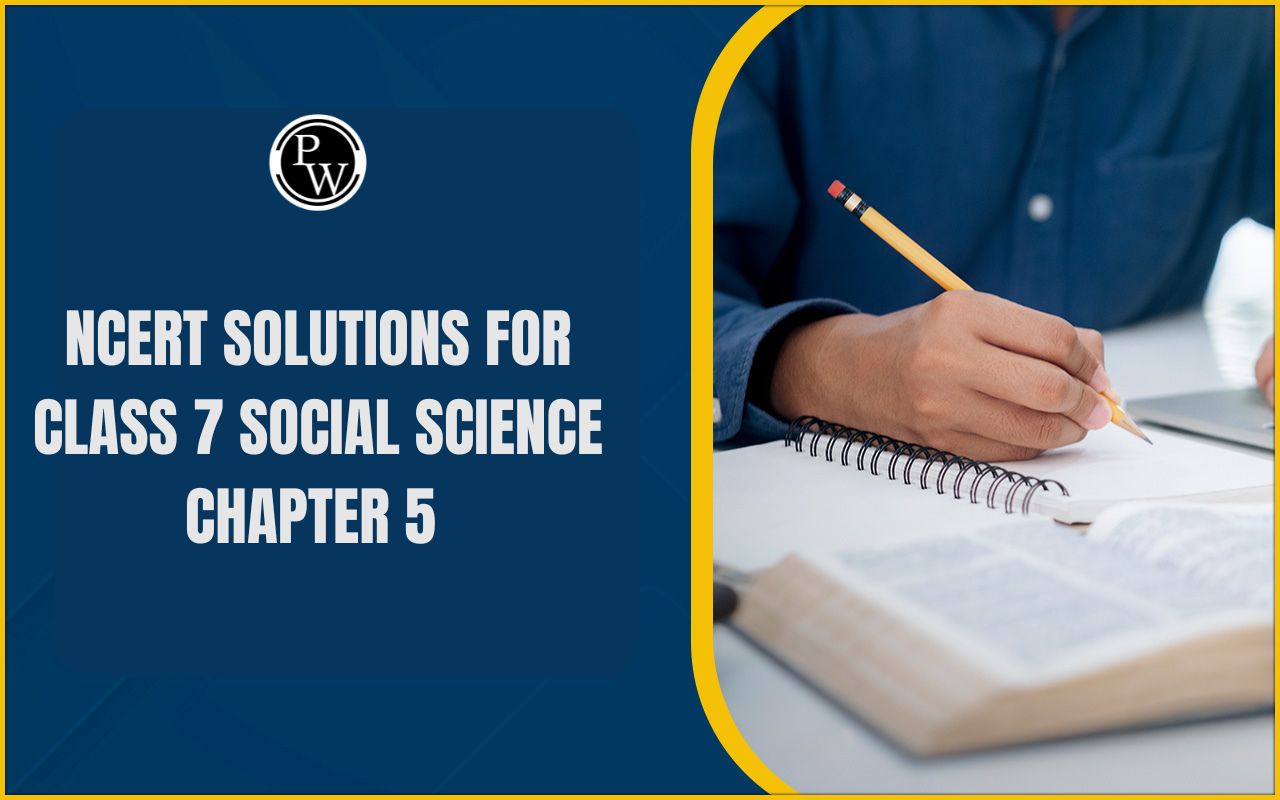
CBSE Class 7 Social Science History Notes Chapter 1: CBSE Notes for Class 7 History Chapter 1 - "Tracing Changes Through a Thousand Years" explain the important changes that happened in India over a thousand years.
This chapter shows how society, the economy, and culture evolved from ancient to medieval times. It talks about the rise and fall of different kingdoms and how invasions and migrations affected India. By looking at old writings, inscriptions, and coins, students learn how historians study the past. These notes help students understand how history changes and what influenced India's development over many centuries, making history interesting and easy to learn.CBSE Class 7 Social Science History Notes Chapter 1 Tracing Changes Through a Thousand Years Overview
These notes are prepared by subject experts at Physics Wallah. CBSE Class 7 Social Science History Notes for Chapter 1, "Tracing Changes Through a Thousand Years," provide an easy-to-understand overview of the important changes in India over a thousand years. This chapter explains how society, the economy, and culture changed from ancient to medieval times. It talks about the rise and fall of different kingdoms and how invasions and migrations affected India. By looking at old writings, inscriptions, and coins, students learn how historians study the past. These notes help students understand how history changes and what influenced India's development over many centuries, making history interesting and easy to learn.CBSE Class 7 Social Science History Notes Chapter 1 PDF
You can find the notes for Chapter 1 in CBSE Class 7 Social Science History by clicking on the provided link to the PDF. These notes help students understand how history changes and what influenced India's development over many centuries, making history interesting and easy to learn.CBSE Class 7 Social Science History Notes Chapter 1 PDF
CBSE Class 7 Social Science History Notes Chapter 1 Tracing Changes Through a Thousand Years
New and Old Terminologies
Over time, the meanings of words and terms can change significantly. This evolution reflects changes in culture, politics, and society. An example of this is the term “Hindustan.” Today, “Hindustan” is commonly used to refer to the entire country of India. However, its meaning was quite different in earlier times. In the thirteenth century, Minhaj-i-Siraj, a Persian chronicler, used the term “Hindustan” in a much more limited geographical sense. For Minhaj-i-Siraj, “Hindustan” referred specifically to the areas of Punjab, Haryana, and the lands between the Ganga and Yamuna rivers. This demonstrates how the scope and meaning of the term have expanded over centuries to include the whole of modern-day India. This example illustrates a broader phenomenon: language evolves, and the meaning of words can shift dramatically based on historical and cultural contexts. Other terms in history have similarly transformed, reflecting changes in political boundaries, cultural identities, and societal norms. Understanding these shifts is crucial for studying history, as it helps us appreciate the dynamic nature of human civilization and the way we interpret our world.Region and Empire
By around 700 CE, many regions in India had distinct geographical boundaries, languages, and cultural characteristics. These regions often experienced conflicts among themselves, but occasionally, dynasties like the Cholas, Khaljis, Tughlaqs, and Mughals managed to build empires that extended across large parts of the subcontinent. However, not all these empires were equally stable or successful. Despite the influence of these larger pan-regional forces, local states maintained their distinct traditions in governance, economic management, elite culture, and language, while also sharing some common practices and ideas.Old and New Religions
People's beliefs in spirituality and religion were both personal and communal, and these beliefs evolved as the social and economic structures of communities changed. During this period, Hinduism underwent significant transformations. This included the worship of new deities, the construction of temples by royalty, and the growing importance of Brahmanas (priests) as a dominant social group. The Brahmanas' knowledge of Sanskrit texts earned them great respect and support from rulers, leading to the development of the bhakti movement, which emphasized personal devotion to deities. New religions also emerged in the subcontinent during this time. The teachings of the Holy Quran were brought to India by merchants and migrants in the seventh century. Muslims regard the Quran as their holy book and believe in the sovereignty of one God, Allah, whose love, mercy, and bounty embrace all believers, regardless of their social background. Like Hinduism, Islam was interpreted in various ways by its followers, leading to different schools of law (such as Hanafi and Shafi’i) and diverse theological and mystic traditions.- Easy to Understand: These notes make history easy to understand. They explain how things changed over a thousand years in a simple way.
- Helps Remember Important Things: They help students remember important events and facts about history because they're well-organized.
- Good for Tests: If students have a test, they can use these notes to study. They cover all the important topics that are part of the CBSE curriculum.
- Clear Explanations: The notes make complex ideas easy to understand with clear explanations and examples.
CBSE Class 7 Social Science History Notes Chapter 1 FAQs
How are the changes in historical periods classified?
Changes in historical periods are often classified based on significant events, technological advancements, cultural shifts, and changes in political structures. For example, historians may divide history into ancient, medieval, and modern periods based on these criteria.
Why did British historians categorize Indian history into Hindu, Muslim, and British periods?
British historians categorized Indian history based on the religion of the dominant rulers during different periods. However, this classification oversimplified India's rich and diverse history, neglecting the complexities of regional cultures, languages, and socio-political structures.
How do historians study changes in historical periods?
Historians use various sources such as architecture, inscriptions, coins, and textual records to study changes in historical periods. They analyze these sources to understand social, political, economic, and cultural transformations over time.
How do changes in social groups and religious beliefs impact historical periods?
Changes in social groups, such as the emergence of new ruling elites or the formation of distinct social classes, can lead to shifts in power dynamics and social structures. Similarly, changes in religious beliefs and practices often accompany social and cultural transformations, shaping the identity and values of societies over time.
What role do new technologies and cultural exchanges play in shaping historical periods?
New technologies, such as the spinning wheel and firearms, often drive significant changes in societies and economies. Cultural exchanges, facilitated by trade and migration, contribute to the exchange of ideas, beliefs, and practices, influencing the development of civilizations.
🔥 Trending Blogs
Talk to a counsellorHave doubts? Our support team will be happy to assist you!

Check out these Related Articles
Free Learning Resources
PW Books
Notes (Class 10-12)
PW Study Materials
Notes (Class 6-9)
Ncert Solutions
Govt Exams
Class 6th to 12th Online Courses
Govt Job Exams Courses
UPSC Coaching
Defence Exam Coaching
Gate Exam Coaching
Other Exams
Know about Physics Wallah
Physics Wallah is an Indian edtech platform that provides accessible & comprehensive learning experiences to students from Class 6th to postgraduate level. We also provide extensive NCERT solutions, sample paper, NEET, JEE Mains, BITSAT previous year papers & more such resources to students. Physics Wallah also caters to over 3.5 million registered students and over 78 lakh+ Youtube subscribers with 4.8 rating on its app.
We Stand Out because
We provide students with intensive courses with India’s qualified & experienced faculties & mentors. PW strives to make the learning experience comprehensive and accessible for students of all sections of society. We believe in empowering every single student who couldn't dream of a good career in engineering and medical field earlier.
Our Key Focus Areas
Physics Wallah's main focus is to make the learning experience as economical as possible for all students. With our affordable courses like Lakshya, Udaan and Arjuna and many others, we have been able to provide a platform for lakhs of aspirants. From providing Chemistry, Maths, Physics formula to giving e-books of eminent authors like RD Sharma, RS Aggarwal and Lakhmir Singh, PW focuses on every single student's need for preparation.
What Makes Us Different
Physics Wallah strives to develop a comprehensive pedagogical structure for students, where they get a state-of-the-art learning experience with study material and resources. Apart from catering students preparing for JEE Mains and NEET, PW also provides study material for each state board like Uttar Pradesh, Bihar, and others
Copyright © 2025 Physicswallah Limited All rights reserved.
Get App







